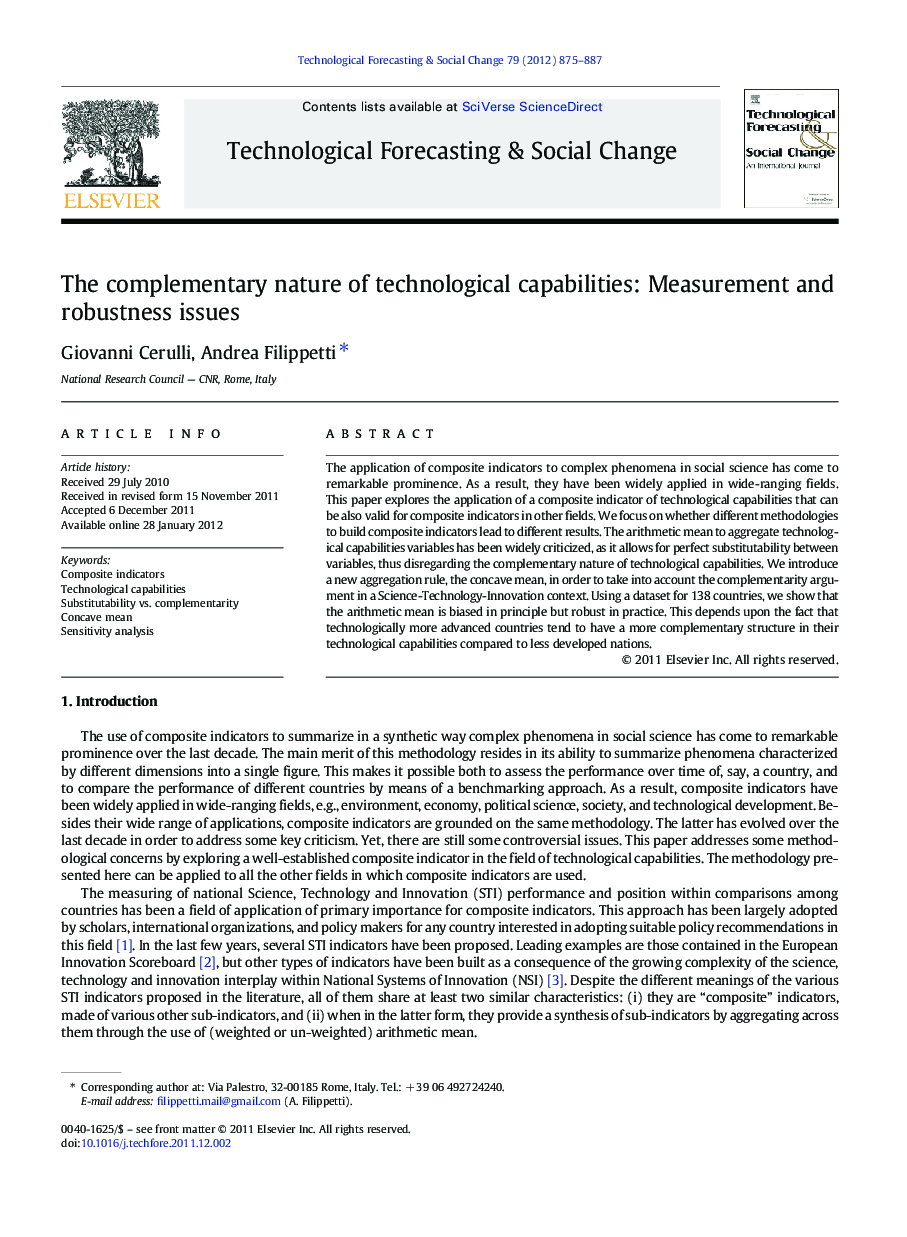| Article ID | Journal | Published Year | Pages | File Type |
|---|---|---|---|---|
| 896686 | Technological Forecasting and Social Change | 2012 | 13 Pages |
The application of composite indicators to complex phenomena in social science has come to remarkable prominence. As a result, they have been widely applied in wide-ranging fields. This paper explores the application of a composite indicator of technological capabilities that can be also valid for composite indicators in other fields. We focus on whether different methodologies to build composite indicators lead to different results. The arithmetic mean to aggregate technological capabilities variables has been widely criticized, as it allows for perfect substitutability between variables, thus disregarding the complementary nature of technological capabilities. We introduce a new aggregation rule, the concave mean, in order to take into account the complementarity argument in a Science-Technology-Innovation context. Using a dataset for 138 countries, we show that the arithmetic mean is biased in principle but robust in practice. This depends upon the fact that technologically more advanced countries tend to have a more complementary structure in their technological capabilities compared to less developed nations.
► We introduce the concave mean to consider complementarity in composite indicators. ► We show that the arithmetic mean is biased in principle but robust in practice. ► Advanced countries have a complementary structure in their technological capabilities.
